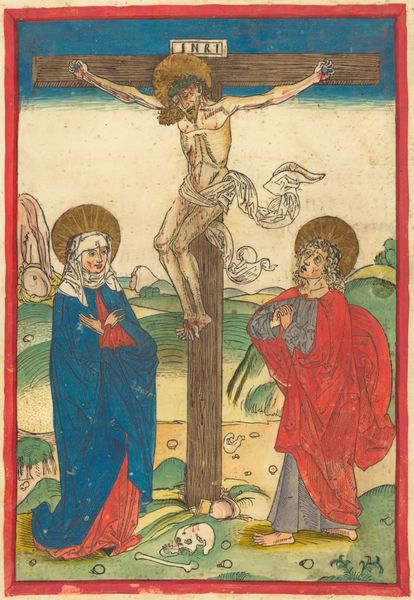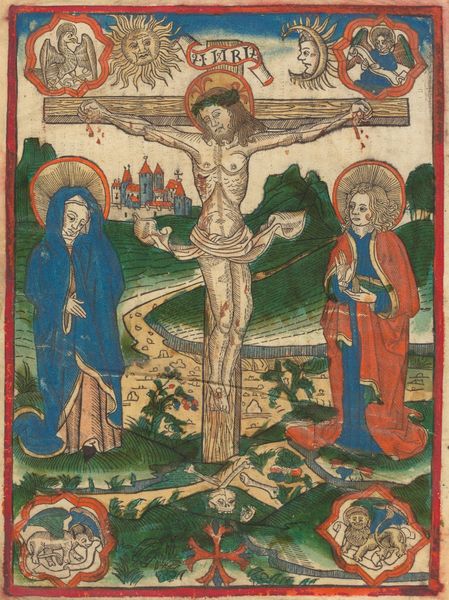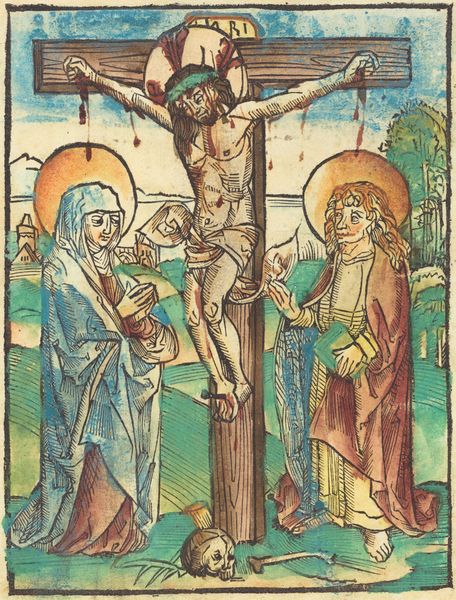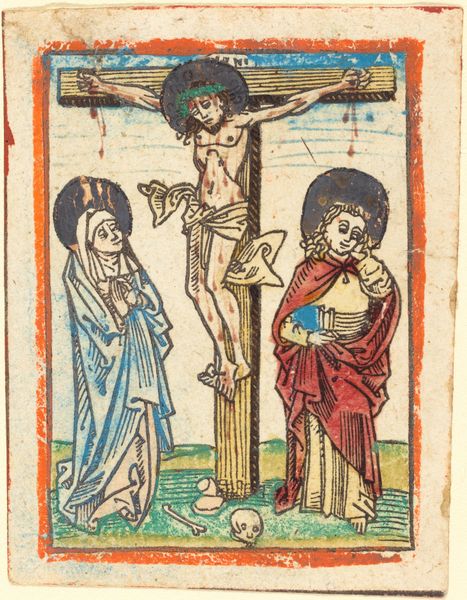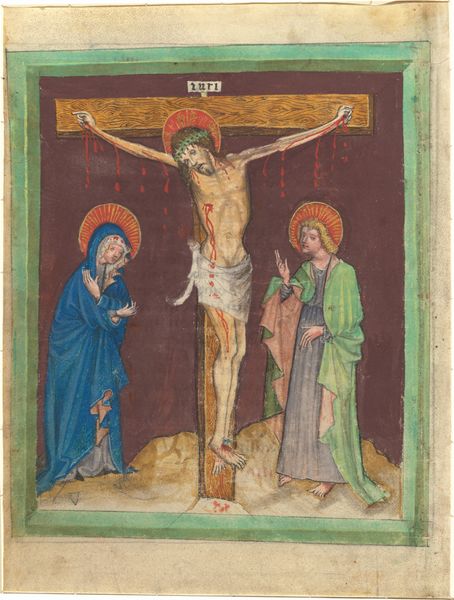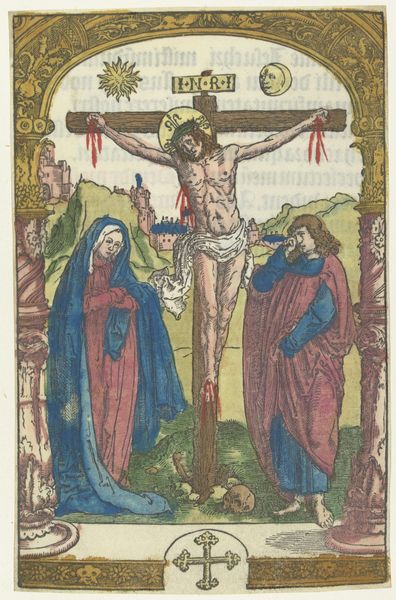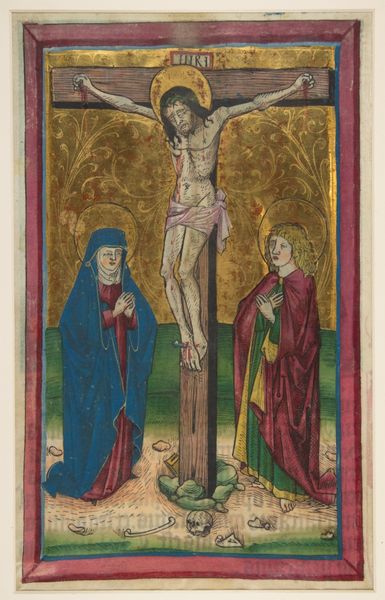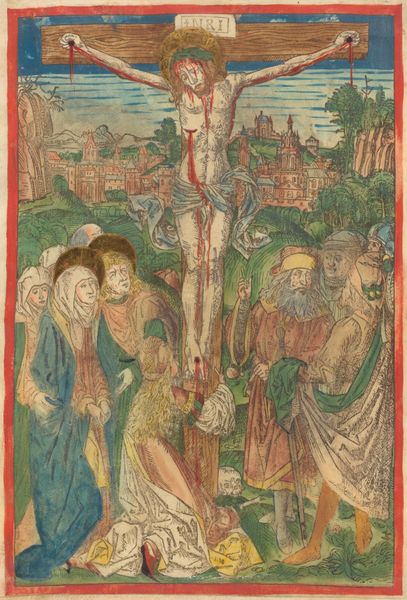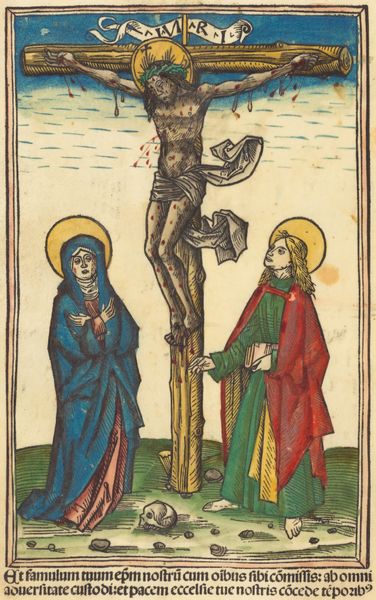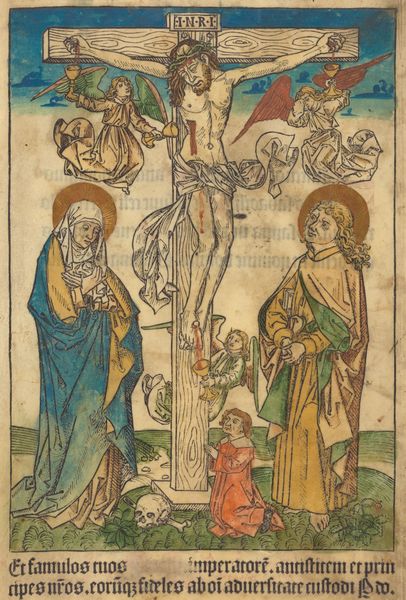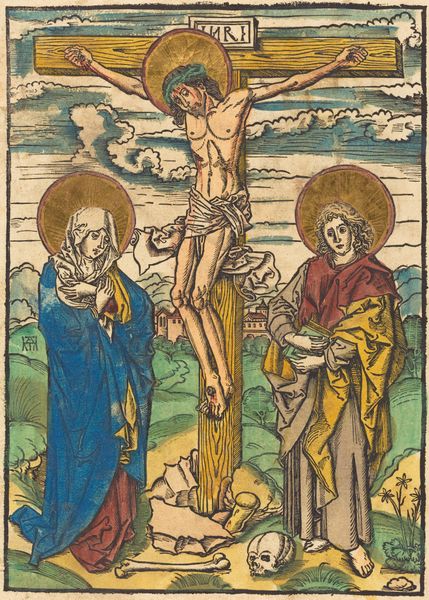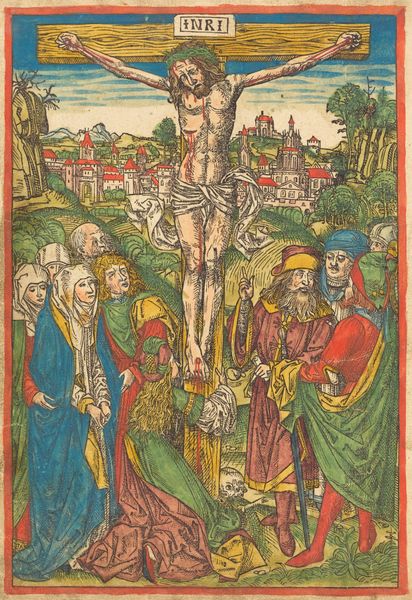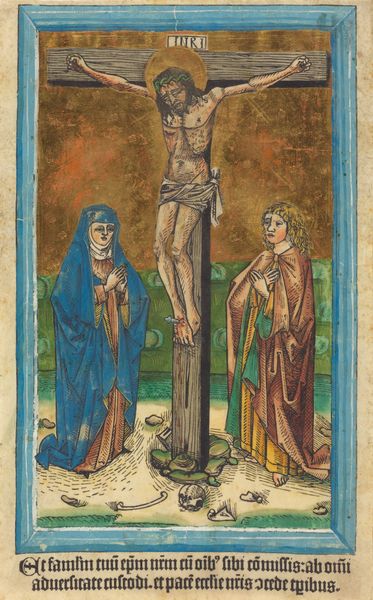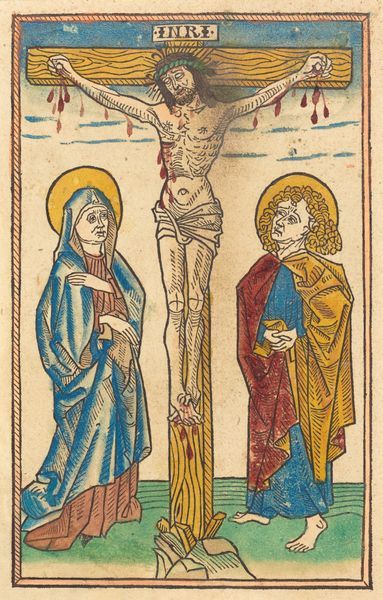
coloured-pencil, print, intaglio, woodcut, engraving
#
coloured-pencil
#
medieval
# print
#
intaglio
#
gothic
#
landscape
#
figuration
#
coloured pencil
#
woodcut
#
history-painting
#
italian-renaissance
#
engraving
Dimensions: 7 7/8 x 5 7/16 in. (20 x 13.81 cm) (image)
Copyright: Public Domain
This anonymous woodcut depicts Christ on the Cross with Mary and Saint John. The dominant symbol, the crucifix, embodies sacrifice, redemption, and profound suffering. The skull at the foot of the cross is a vanitas motif, a reminder of mortality, echoing the inevitable decay awaiting all living beings. The image is reminiscent of earlier Romanesque art, where such stark symbols served as potent reminders of the brevity of life, the inevitability of death, and the hope for salvation. Consider the evolution of the skull motif - from its origins in ancient funerary art to its frequent appearance in medieval memento mori. This emblem has traversed cultures and centuries, undergoing shifts in meaning, yet persistently evoking reflections on human existence and the passage of time. Observe the profound emotional power of this woodcut. It engages viewers on a deeply subconscious level, stirring the collective memory of shared human experiences and the eternal quest for meaning in the face of mortality. The symbols in this work have an emotional, psychological, and cultural weight across time and space.
Comments
minneapolisinstituteofart almost 2 years ago
⋮
Makers of early devotional woodcuts took care to make Christ's blood explicit. Here, the woodcutter incorporated a few long drips into the design (evident under Christ's arms), but depended on a colorist to hand-apply red pigment to complete the composition. Blood spurts realistically from the nail holes, then down the torso and onto the rocks below. The vellum used for this print would have been widely viewed as a metaphor for Christ's flesh. This woodcut was found glued into the Missale Defunctorum, published in Vienna by Johann Winterburger. Often such prints were painted with a thick border to disguise the seam where the edge of the print met the page of the book.
Join the conversation
Join millions of artists and users on Artera today and experience the ultimate creative platform.
